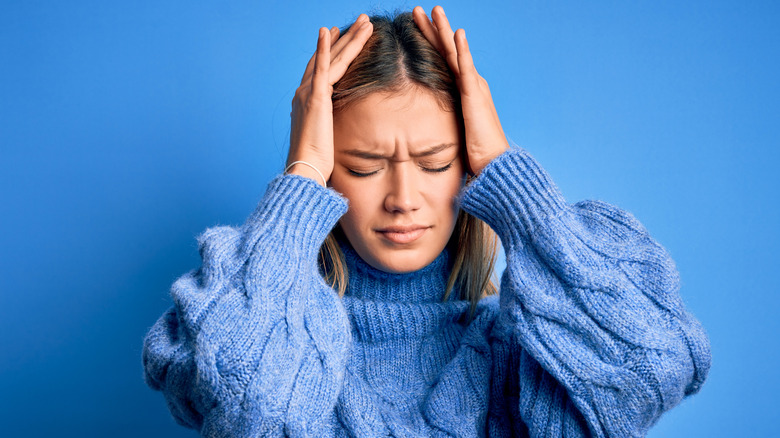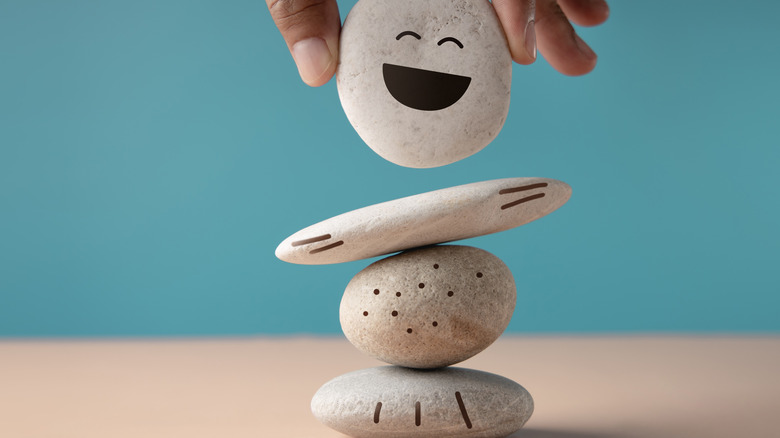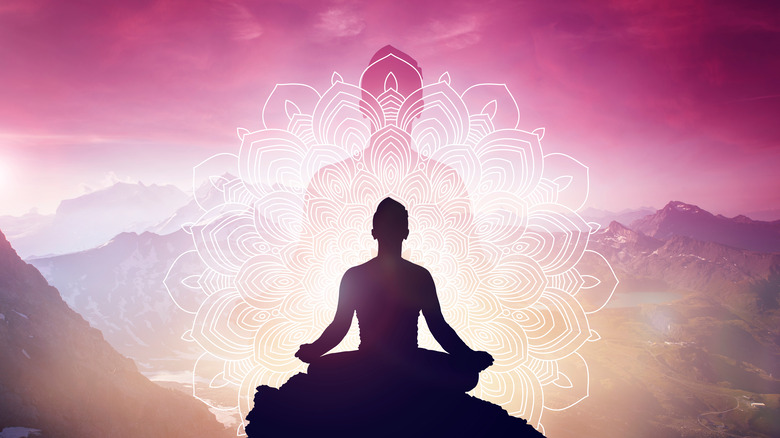The Quickest Way To Relieve Tension And Stress On The Go
"Everything's fine," your mouth says calmly through a fake smile, but your eyes are screaming, "Everything's on fire!!!" Yeah, we know. We're right there with you.
Daily life has felt like a lot lately, has it not? The American Psychological Association partnered with The Harris Poll and surveyed American adults in February and March this year and found that 87% of people polled felt high levels of stress about the rise in costs of everyday items, 81% were stressed due to global uncertainty, and 80% were worried about the invasion in Ukraine and feared retaliation from Russia. Post pandemic, 58% of people reported unwanted changes in their weight, and 21% admitted that they're drinking more alcohol to deal with stress and feelings of loneliness. And who can blame them? The last few years have been hard on all of us.
But when you step back for a moment, we hope you'll see that there's still much to be thankful for. Of course, stepping back can be difficult when you feel overwhelmed. But by practicing one little trick, you can find relief in our ever-increasing anxious world.
How can meditation help?
Popular culture has been waxing poetic about the benefits of meditation for a few years now. And while sometimes fads are just a bunch of hype, meditation is the real deal. A 2013 study published in Brain, Behavior, and Immunity found that after eight weeks of mindfulness meditation, participants experienced a reduction in stress, as well as the inflammatory response triggered by stress. Another 2013 study published in the Journal of Clinical Psychiatry reported that eight weeks of mindfulness meditation helped reduce anxiety symptoms in people with generalized anxiety disorder and increased positive self-statements and coping skills.
Meditation practice isn't one size fits all, so if you're new to the meditation game, you might need to try different techniques and see what works best for you. There are mantra meditations, visualization meditations, and mindfulness meditations, the last of which involves increasing your awareness to the point of watching your thoughts like an outside observer, per Healthline. There are martial arts and yoga practices that are considered meditative or walking meditations if sitting still just isn't your thing. And if you're on the go and you've only got a few minutes, you can do a body scan meditation.
How to do body scan
Though a body scan meditation is ideal while sitting or lying down, it can be done in any posture for as little as five minutes (via the University of California Berkeley). Here are step-by-step instructions, according to Verywell Mind: Take a few deep breaths, focusing on deep breathing with the belly, not the chest. Continuing to deep breathe, bring awareness to your feet, observing and acknowledging sensations, tensions, or emotions from that part of your body. Do this as you work your way up to the top of your head. Breathe into tightness or pressure you may feel, as a way to release tension.
Do this for your whole body if you have time. Get as specific as you can, bringing attention to your eyebrows, your tongue, your jaw, your fingers, and your hips. Try and do this whenever you feel stressed throughout the day, as it promotes body awareness and relaxation. If you don't have time to do a full-body scan, take notice of where you're carrying tension (via Verywell Mind). Notice it for a moment, and then actively release it, relaxing any tense muscles.



